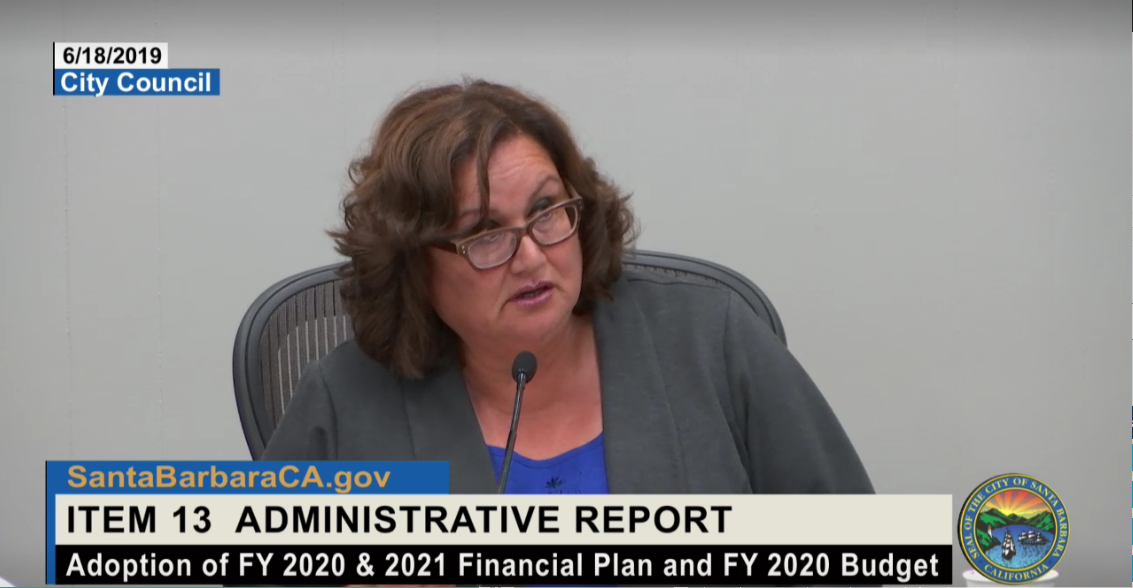Santa Barbara County Gets $6 Million Diversion Grant
Co-Response Team, New Sober Center and 20 New Chill-Out Beds Funded

The dog days of summer haven’t arrived yet. Mercury doesn’t launch into retrograde until next month, yet tempers are snapping louder than a fat man’s suspenders. In fact, nothing less than police intervention was required to restore order at this week’s Santa Barbara City Council meeting as Anna Marie Gott — the loudly buzzing council gadfly who has achieved acronym status of “AMG” — erupted into peals of bitter laughter, shouting that the mayor was “a tyrant.” The Mayor, known alternately as Cathy Murillo, was trying to silence the loquaciously pugnacious councilmember, Jason Dominguez. (Technically, she cut off further debate and called the question.) Jason, by way of background, has been known to provoke. Cathy, likewise, is known to overreact. Either way, it’s not a good look. (For the facts, see the news article by Delaney Smith.)
All this high-profile gassing off underscored my great sense of relief upon hearing the County of Santa Barbara just won a $6 million Proposition 47 grant. Prop. 47 is the law Californians passed in 2014 intended to get people who don’t really belong behind bars somewhere else. Such as into treatment for substance-abuse or mental-health issues. The money will pay for a lot of things — a new sober center, for example, and 20 beds of step-down housing — but chief among them is the county’s obliquely named “co-response team.” That’s where a mental-health crisis outreach worker is teamed up with a sheriff’s deputy and sent out into the wild blue yonder in hopes of defusing situations that could otherwise lead to flying lead.
The county hatched this program — old hat in other parts of the country — as an experimental effort and on a trial basis last September. Almost from the get-go, its days appeared numbered. Given chronic staffing problems with the Sheriff’s Office, it was unclear just how available departmental brass could cut Deputy James McKarrell loose to star in what could be a real-life buddy movie with mental-health crisis worker Bradley Crable.
In previous incarnations, Crable has pretty much lived through everything his clients are going through. This — coupled with a wicked sense of humor — makes him exceptionally insightful. The chemistry between these two gentle giants makes them unusually effective. McKarrell, as a sheriff’s deputy, can arrest people if need be. Crable, as a crisis outreach worker, is authorized to place people on involuntary psychiatric holds.

Mostly, they’re all about de-escalation. They show up when someone in full meltdown has crossed a line that could get them put in jail. Traditional cops — steeped in years of command and control training — have been known to aggravate such suspects. When that happens, the results are rarely pretty and on occasion fatal. In recent years, the Powers That Be have finally realized jail is not the place for people in this shape to be shipped. Bad situations tend to get worse there. After four days, “decompensation” sets in. Understanding comes easy; change, however, is hard. As such, the co-response plan constituted a wobbly first step in the right direction.
Thus far, the numbers look impressive. According to the latest stats, the co-response team has had 446 encounters. Of those, 72 subjects were checked into a psychiatric hospital; 31 went voluntarily, the rest on a three-day hold against their will. Another 36 were taken to the county’s grossly underutilized Crisis Stabilization Unit (CSU), where for the last 23 years, they can chill on reclining Barca loungers, watch TV, listen to music, or engage therapeutically with the mental-health professionals on-site. (I say “grossly underutilized” because the CSU is licensed for eight cooling-off “beds,” but it has never been staffed for more than four. Although it opened four years ago, cops only first learned of its existence a year ago. I am sure there’s a logical explanation, but every time I’ve been told what it is, my mind’s gone blank.)
But here’s the big number where co-response is concerned. Of those 446 contacts, only seven people were taken to jail.
Front-line cops are reportedly thrilled. With the co-response team in place, they no longer have to babysit highly agitated, potentially volatile individuals until mental-health case workers show up to relieve them, a process that reportedly often takes in excess of three hours.
A lot of what McKarrell and Crable do is preemptive hand-holding. But on occasion they also play the role of human bomb squad. Last month, for example, McKarrell and Crable rolled up on Mission Canyon stand-off in which a 56-year-old man with a long history of mental illness and criminal weirdness had broken into his parents’ home — in which, yes, there were guns — and threatened violence to both the occupants and the cops. I have no idea how it happened, but they talked him down. A couple of months earlier, they responded to a potential suicide, only to discover the 27-year-old male had enough rifles, handguns, ammo, and cash to take over a small Third World nation. By placing him on an involuntary psychiatric hold and on to a properly licensed psychiatric hospital, they made sure he couldn’t get his guns back — or legally buy new ones — for at least five years.
Earlier this year, we learned that the plug was about to be pulled on this program. Santa Barbara’s coalition of mental-health advocates, predictably, went ballistic; county supervisors took note; cooler heads prevailed; and the plug was un-pulled. But only until July 1.
This grant will keep the program going for at least the next three years. The City of Santa Barbara, in the meantime, has just launched its own version of co-response. The dog days of summer may be baying in the distance, but I can hear that fat man’s suspenders.
Clarification: The reason the county’s mental health Crisis StabiIization Unit (CSU) has not operated at full capacity since it opened in 2016, it turns out, is not staffing but other issues. Likewise, regarding law enforcement agencies’ awareness of the CSU’s existence until a year ago, some high ranking law enforcement brass were, in fact, aware of it, but many rank-and-file officers were either unaware of it or chose not to take advantage of it because it was time prohibitive to do so. In the past year, many of the issues that made the CSU an off-putting option to frontline troops have been addressed. In any case, the CSU — which offers 23-hour respite for those experiencing acute psychological distress — has yet to operate at anything more than 50 percent capacity.




You must be logged in to post a comment.